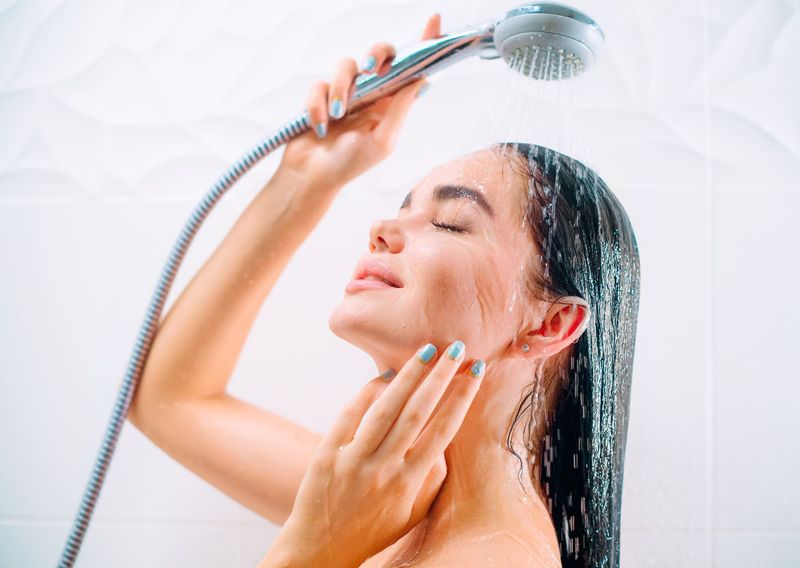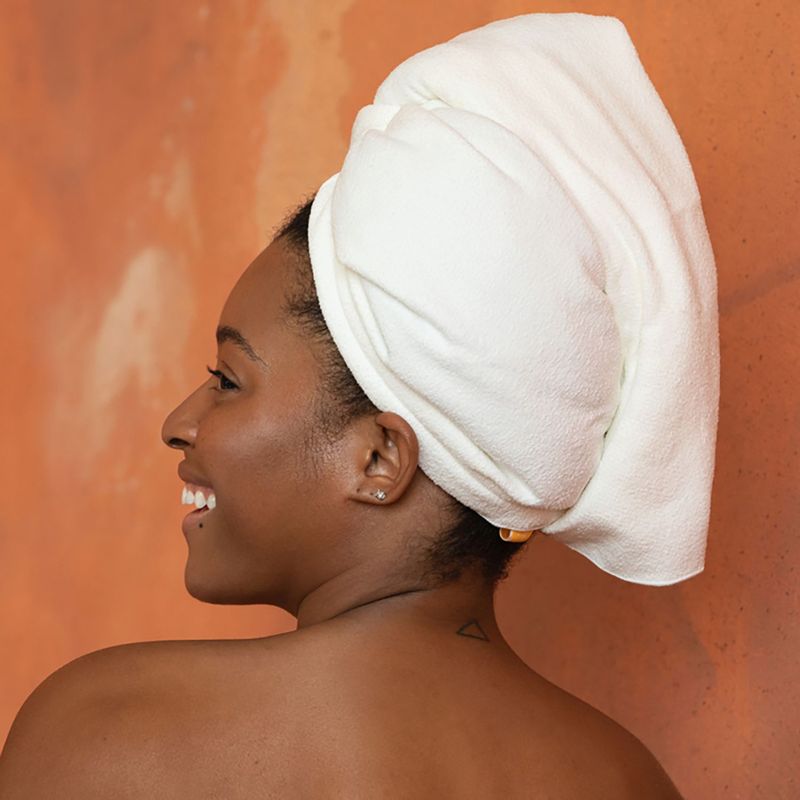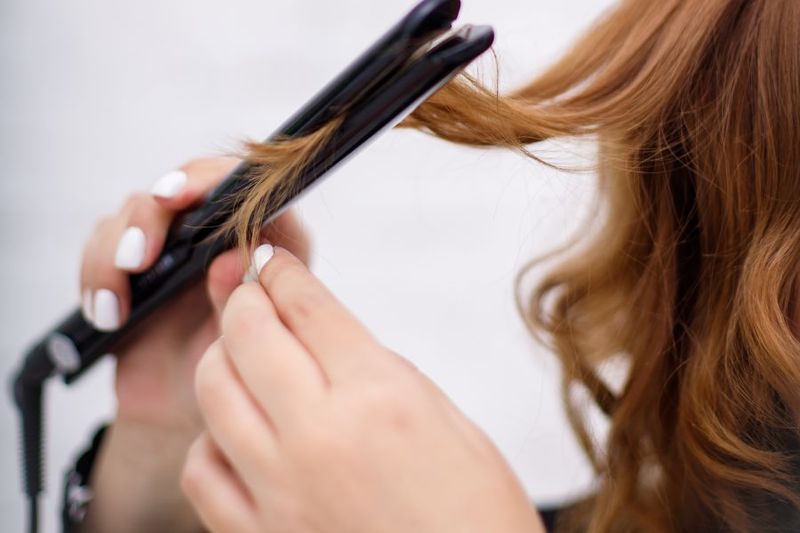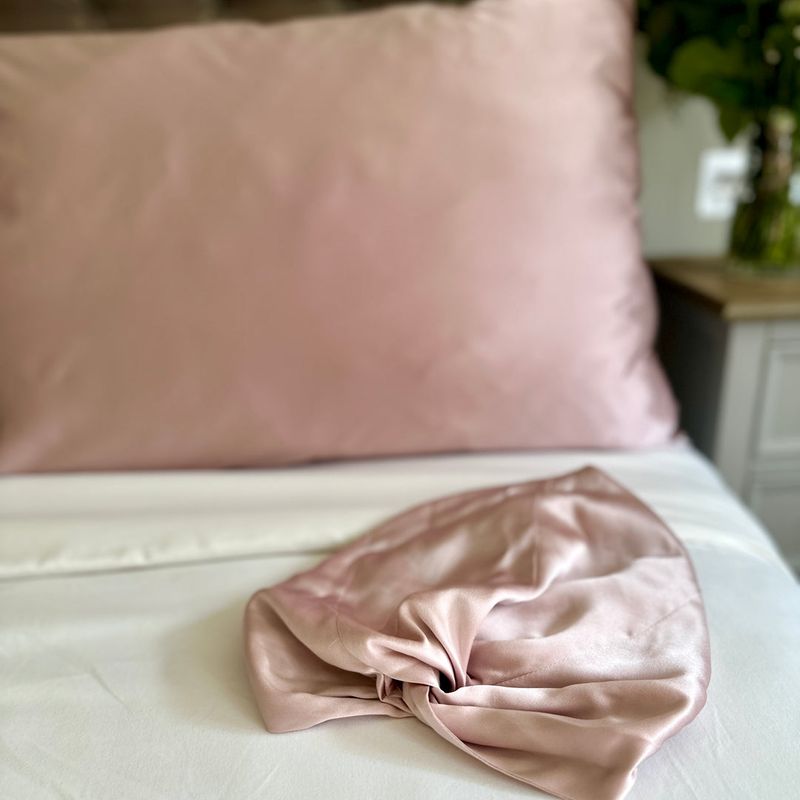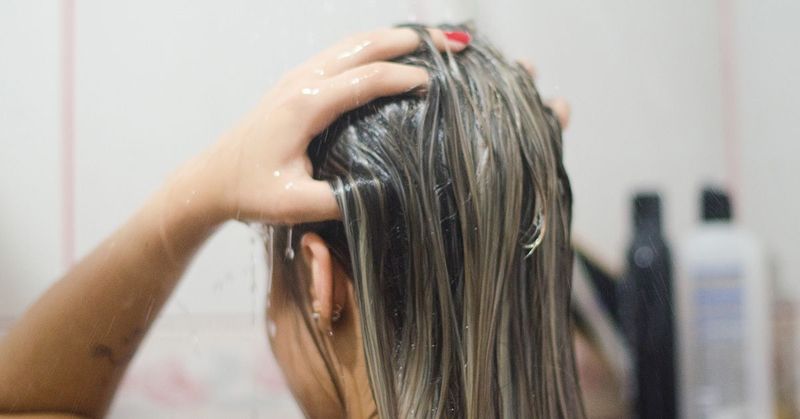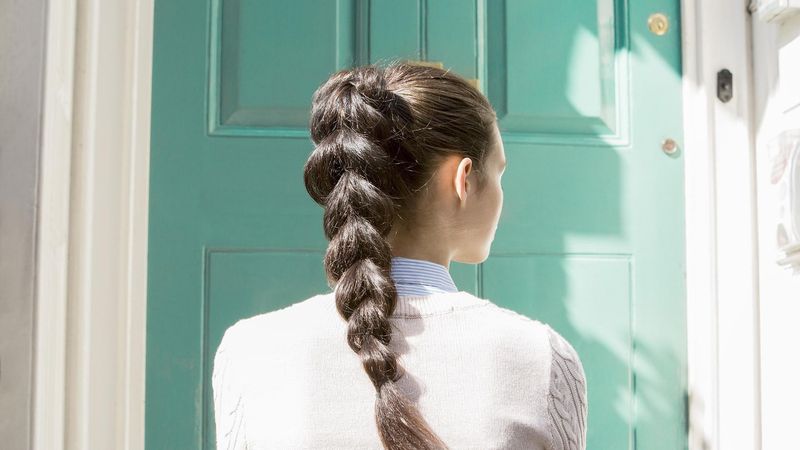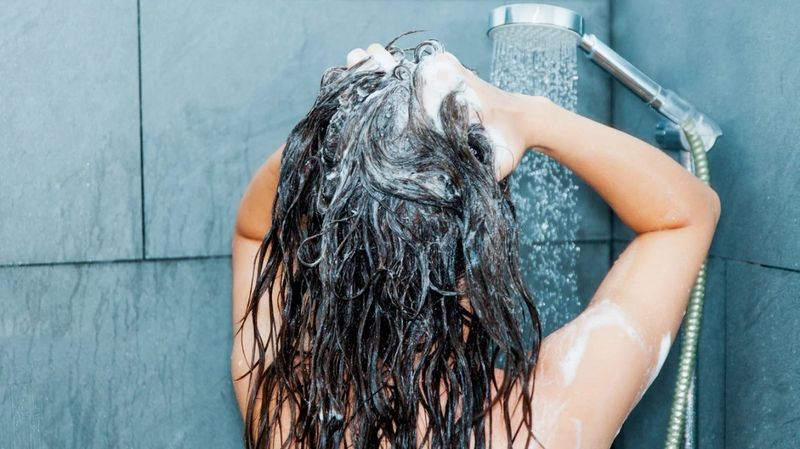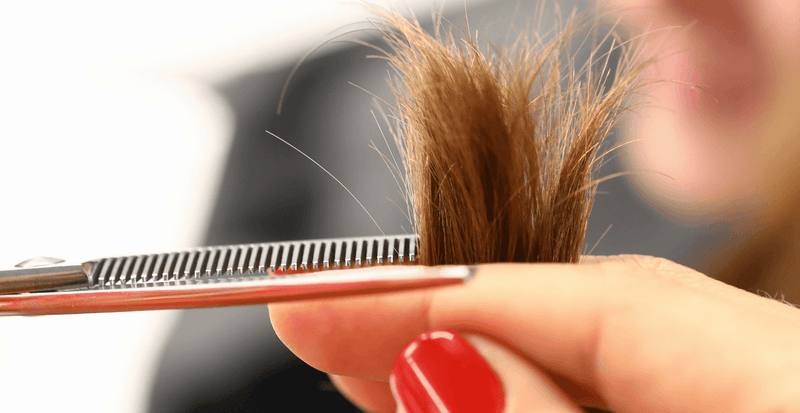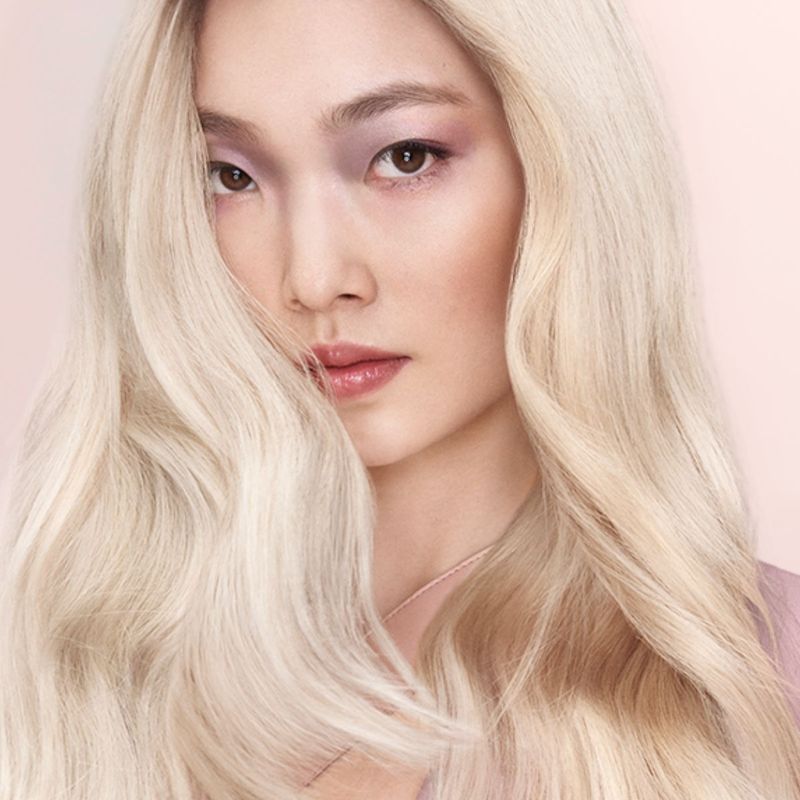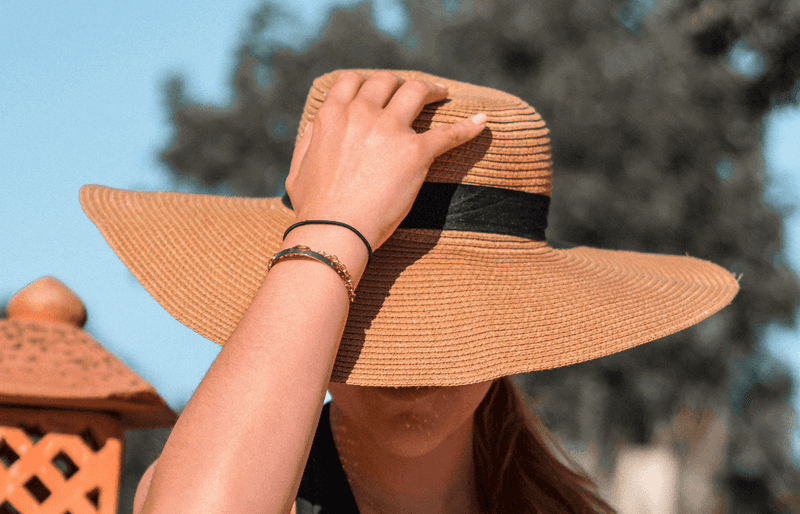Is your hair feeling dull, lifeless, or just plain uncooperative lately? Maybe it’s time to shake up your hair care routine with some fresh approaches. Our hair needs change with seasons, age, and even lifestyle shifts, but many of us stick to the same old habits for years. These practical tips will breathe new life into your locks and help you achieve that healthy, vibrant hair you’ve been dreaming about.
1. Brush Before Washing, Not After
Wet hair is fragile and prone to breakage. Taking a minute to detangle your locks before they get soaked can prevent damage and reduce those painful tugging sessions later.
Use a wide-tooth comb or a brush specifically designed for detangling. Start from the ends and work your way up gradually to avoid snapping strands.
Related: -7 Straight-Hair Problems No One Talks About And 8 Easy Fixes That Shine
This simple habit shift can dramatically reduce breakage over time. Your scalp will thank you too—brushing distributes natural oils from roots to ends, giving your hair a pre-wash conditioning treatment.
2. Cold Water Final Rinse
Hot showers feel amazing, but they’re not your hair’s best friend. Finishing your hair wash with a blast of cold water might make you gasp, but the benefits are worth the momentary discomfort.
Cold water seals the hair cuticle, locking in moisture and creating shinier, smoother strands. The sealed cuticle reflects light better, enhancing your hair’s natural shine. Plus, it helps your color last longer if you dye your hair.
Not ready for ice-cold? Even lukewarm is better than hot water, which strips away natural oils and moisture.
3. Switch to Microfiber Towels
Regular bath towels might be secretly sabotaging your hair game. The rough texture creates friction that leads to frizz, breakage, and split ends. Microfiber towels absorb moisture quickly without the aggressive rubbing that damages your strands. They’re gentler on your hair cuticle and can cut down drying time significantly.
Simply wrap your hair turban-style or gently squeeze out excess water. Many people notice an immediate difference in frizz reduction after making this simple switch.
As a bonus, microfiber towels are lightweight, dry quickly, and take up less space than traditional bath towels.
4. Protect Your Strands From Heat
Heat styling tools can transform your look in minutes, but they’re also hair damage powerhouses. Applying a heat protectant before using hot tools creates a protective barrier between your precious strands and temperatures that can reach over 400°F.
Look for products containing ingredients like dimethicone or cyclomethicone, which help distribute heat evenly. Many formulas now include nourishing ingredients like argan oil or keratin for added benefits.
Remember that no product offers 100% protection, so try to limit heat styling to 2-3 times weekly and use the lowest effective temperature setting.
5. Silk Pillowcases Are Game-Changers
Cotton pillowcases might be secretly stealing your hair’s moisture while you sleep. The absorbent fabric creates friction against your hair, leading to tangles, frizz, and even breakage.
Silk pillowcases, on the other hand, allow your hair to glide smoothly as you toss and turn. The smooth surface minimizes friction and helps maintain your hairstyle overnight. Many people report waking up with fewer tangles and less bedhead after making the switch.
Silk doesn’t absorb moisture like cotton does, helping your hair retain its natural oils. Consider it an investment in both your hair and skin health!
6. Scalp Massages Boost Growth
Your scalp deserves some TLC too! Regular massages stimulate blood flow to your follicles, which can promote healthier, faster-growing hair. Take just 5 minutes a day to work your fingertips (not nails) in gentle circular motions across your entire scalp.
For an enhanced experience, add a few drops of rosemary or peppermint essential oil diluted in a carrier oil. These have been shown to potentially stimulate hair growth. The massage helps distribute natural oils from your scalp down your hair shaft.
Beyond the hair benefits, scalp massages reduce stress and tension—a win-win for your hair and mental wellbeing!
7. Weekly Deep Conditioning Treatments
Regular conditioner only goes so far. Adding a weekly deep conditioning mask can transform chronically dry, damaged, or color-treated hair. These intensive treatments penetrate deeper into the hair shaft, repairing damage from the inside out.
Apply to damp hair, focusing on mid-lengths to ends where damage is most common. Covering with a shower cap creates heat that helps the product penetrate more effectively. Leave it on for 15-30 minutes—longer isn’t necessarily better as hair can only absorb so much.
Look for ingredients like keratin, proteins, and natural oils for maximum benefits without weighing hair down.
8. Clarifying Shampoo Monthly Reset
Product buildup happens to everyone, even with careful washing. Over time, residue from styling products, conditioners, and hard water minerals can leave hair looking dull and feeling heavy. A monthly clarifying shampoo session removes these stubborn deposits. Think of it like a reset button for your hair.
After clarifying, your regular products will work better because they can actually reach your hair shaft. These powerful cleansers should be used sparingly—once every 2-4 weeks for most people.
Always follow with a good conditioner since clarifying shampoos can temporarily strip natural oils along with the buildup.
9. Nighttime Braiding Prevents Damage
Leaving hair loose while you sleep creates a perfect storm for tangles and breakage. The friction between your hair and pillow, combined with tossing and turning, can cause significant damage over time.
A loose braid before bed keeps strands contained without tension. Unlike tight ponytails that can cause breakage, a soft braid minimizes friction while still allowing comfortable sleep. For curly hair, try a pineapple (loose top knot) instead. Those with very short hair can benefit from a satin sleep cap.
Morning bonus: take out your braid and enjoy subtle, heat-free waves!
10. Adjust Washing Frequency
Daily shampooing might be stripping your scalp of essential oils. Most hair types benefit from reducing wash frequency to 2-3 times weekly. This allows natural sebum to condition your hair and protect your scalp’s microbiome.
Oily-haired folks can train their scalp to produce less oil over time by gradually extending days between washes. Dry shampoo can help during the transition. Those with very dry or curly hair might go even longer between washes—some curly hair types thrive with just weekly cleansing.
When you do wash, focus the shampoo on your scalp rather than the lengths, which get cleaned as the suds rinse through.
11. Regular Trims Prevent Split Ends
Waiting too long between haircuts won’t help your hair grow faster—it actually does the opposite. Once a hair splits at the end, the damage can travel up the shaft, forcing you to cut even more length eventually. Schedule trims every 8-12 weeks, even if you’re growing your hair.
Ask for a “dusting” where the stylist just removes the damaged ends without taking length. This preventative maintenance keeps your hair looking healthier and prevents the need for dramatic cuts later.
Bonus tip: bring photos of what you want (and don’t want) to ensure you and your stylist are on the same page.
12. Satin Scrunchies Over Elastic Bands
Those thin elastic hair ties might be convenient, but they’re causing major breakage. The tight grip and rough texture create stress points that weaken hair strands over time. Satin or silk scrunchies provide a gentler alternative that still keeps your hair secure. The smooth fabric reduces friction and prevents those annoying dents and creases in your hair.
They’re especially beneficial for nighttime use or workouts when your hair is pulled back for extended periods. Many people notice fewer broken hairs around their hairline after making this simple switch.
As a style bonus, scrunchies are having a major fashion moment right now!
13. Bond-Building Treatments For Damaged Hair
If your hair has been through the chemical wringer with bleaching, coloring, or perming, bond-building treatments might be your salvation. These innovative products work by repairing the broken disulfide bonds in your hair’s structure—damage that regular conditioners can’t touch.
Unlike surface treatments, bond builders work at the molecular level to restore hair’s internal structure. Many can be used at home between salon visits. The results can be dramatic for severely damaged hair—reduced breakage, improved elasticity, and restored shine.
While pricier than regular conditioners, they’re still cheaper than cutting off all your damaged hair and starting over!
14. Protect Hair From Sun Damage
We diligently apply sunscreen to our skin, but our hair needs UV protection too! Sun exposure can fade color, dry out strands, and weaken hair’s structure. Products with UV filters create an invisible shield against these damaging rays.
Look for leave-in conditioners or styling products specifically formulated with UV protection. Wearing a hat provides physical protection while also guarding your scalp from sunburn. This is especially important for color-treated hair, which is more vulnerable to sun-induced fading.
Remember that swimming pools and salt water compound sun damage, so be extra vigilant about protection during beach and pool days.
15. Nutrition Impacts Hair Health
Beautiful hair starts from within. Your hair cells are among the fastest-growing in your body, requiring steady nutrition to thrive. Protein deficiency can lead to weak, brittle strands since hair is made primarily of protein.
Essential fatty acids from sources like salmon, avocados, and nuts nourish follicles and add shine. Iron, zinc, and vitamins A, C, D, and E all play crucial roles in hair growth and strength. Biotin supplements are popular for hair health, though research shows they mainly help those with existing deficiencies.
Staying hydrated is equally important—drink water throughout the day for optimal scalp and hair health.



